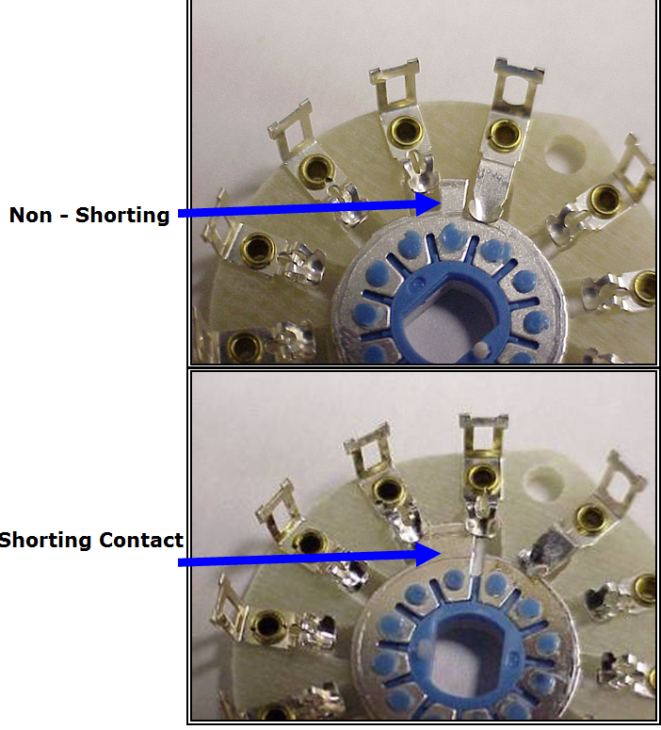Preamplifiers consist of three essential elements: input selection, volume control, output. Of the three the volume control is by far the most difficult to get right, but the input selector isn't far behind.
Few of us give much thought to the mechanics of switching inputs. Your preamp might have four, perhaps five input choices. Some have as many as ten. That number is typically dependent on two things: back panel space and budget. Mostly back panel space. Input connectors chew through real estate quickly—especially XLR connectors for balanced ins. Take a look at the back panel of the BHK Signature preamplifier and note it is full.

There's room here for only five inputs because of the XLR connectors. Had we used only RCA we could have doubled the number, though truth is, there aren't that many analog sources to connect to these days. In fact, three analog inputs is probably sufficient for the majority of today's systems.
Regardless of the number of inputs, the preamp's task is to select one to feed into the volume control.
Before the advent of remote controls input selection was rather simple. A switch, either rotary or button. If connected to a knob on the front panel, rotary switches were the selector of choice for most preamplifiers. But switches are not perfect devices. In fact, switches always detract (distort) the signal passing through them. Careful consideration is required to minimize this audible thumbprint.
Here's what those contacts look like:

Essentially two pieces of metal rub together to form a connection. In this picture you see an outer ring of solder lugs and in the middle a central metal contact that is either shorting or non-shorting. The outer ring of lugs is where each of the many inputs is connected to. The central inner ring is what then feeds the volume control. As you turn this rotary connector, the center metal contact connects to one of the many inputs and you get sound from that input.
In an age where we worry about the materials in our wires and fuses, it should become immediately obvious that your music is passing through a rather ugly non-soldered connection in the preamp. Which is why companies still using these most ancient of controls advertise silver, or gold, or rhodium plated switch contacts.
These expensive contacts aren't a
benefit as they are so often advertised to be. Rather than benefitting the signal passing through the switch, expensive contacts are necessary to
minimize damage to the signal, not
enhance it.
 There's room here for only five inputs because of the XLR connectors. Had we used only RCA we could have doubled the number, though truth is, there aren't that many analog sources to connect to these days. In fact, three analog inputs is probably sufficient for the majority of today's systems.
Regardless of the number of inputs, the preamp's task is to select one to feed into the volume control.
Before the advent of remote controls input selection was rather simple. A switch, either rotary or button. If connected to a knob on the front panel, rotary switches were the selector of choice for most preamplifiers. But switches are not perfect devices. In fact, switches always detract (distort) the signal passing through them. Careful consideration is required to minimize this audible thumbprint.
Here's what those contacts look like:
There's room here for only five inputs because of the XLR connectors. Had we used only RCA we could have doubled the number, though truth is, there aren't that many analog sources to connect to these days. In fact, three analog inputs is probably sufficient for the majority of today's systems.
Regardless of the number of inputs, the preamp's task is to select one to feed into the volume control.
Before the advent of remote controls input selection was rather simple. A switch, either rotary or button. If connected to a knob on the front panel, rotary switches were the selector of choice for most preamplifiers. But switches are not perfect devices. In fact, switches always detract (distort) the signal passing through them. Careful consideration is required to minimize this audible thumbprint.
Here's what those contacts look like:
 Essentially two pieces of metal rub together to form a connection. In this picture you see an outer ring of solder lugs and in the middle a central metal contact that is either shorting or non-shorting. The outer ring of lugs is where each of the many inputs is connected to. The central inner ring is what then feeds the volume control. As you turn this rotary connector, the center metal contact connects to one of the many inputs and you get sound from that input.
In an age where we worry about the materials in our wires and fuses, it should become immediately obvious that your music is passing through a rather ugly non-soldered connection in the preamp. Which is why companies still using these most ancient of controls advertise silver, or gold, or rhodium plated switch contacts.
These expensive contacts aren't a benefit as they are so often advertised to be. Rather than benefitting the signal passing through the switch, expensive contacts are necessary to minimize damage to the signal, not enhance it.
Essentially two pieces of metal rub together to form a connection. In this picture you see an outer ring of solder lugs and in the middle a central metal contact that is either shorting or non-shorting. The outer ring of lugs is where each of the many inputs is connected to. The central inner ring is what then feeds the volume control. As you turn this rotary connector, the center metal contact connects to one of the many inputs and you get sound from that input.
In an age where we worry about the materials in our wires and fuses, it should become immediately obvious that your music is passing through a rather ugly non-soldered connection in the preamp. Which is why companies still using these most ancient of controls advertise silver, or gold, or rhodium plated switch contacts.
These expensive contacts aren't a benefit as they are so often advertised to be. Rather than benefitting the signal passing through the switch, expensive contacts are necessary to minimize damage to the signal, not enhance it.








